food desert
description: area that has limited access to affordable and nutritious food
55 results
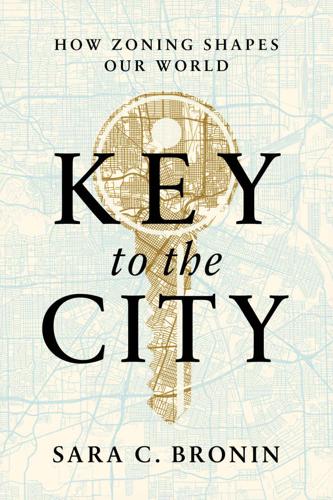
Key to the City: How Zoning Shapes Our World
by
Sara C. Bronin
Published 30 Sep 2024
In Connecticut, high housing and transportation costs (driven in large part by zoning policies) take a disproportionate chunk of household income, and the state’s food insecurity is worse than the national average, afflicting one in six residents—and 28 percent of those living in Hartford and the state’s other cities. Many food-insecure households live in “food deserts,” or areas with limited access to healthy and affordable foods, such as fruits, vegetables, grains, and dairy products. The U.S. Department of Agriculture reports more than 6,500 Census tracts qualify as food deserts, noting that the incidence of food deserts is higher in Census tracts where residents have high poverty rates, lower income and education levels, and higher unemployment rates. Cities are, by definition, crowded places, and we tend to think of them as having correspondingly numerous basic amenities.
…
See United States federal government; specific agencies and departments Federal Highway Administration, 147–49, 196, 204 Federal Housing Administration, 92 Fenway Farms, Boston, 114 Field Museum, Chicago, 43 Field of Dreams, 76 First Amendment of the Constitution, 64, 66, 68, 163–64 five-and-dimes, 24 Flisrand, Janne, 81, 82, 103, 193 flooding, 24, 54, 62–63, 73, 78, 134–35, 168, 170, 189 “floor-to-area ratios,” 83, 105 Florida Disney World, 107, 198 Panhandle, 153 West Palm Beach, 153 See also Delray Beach, FL Florida vernacular architecture, 155 Flynt, Larry, 64, 65 food deserts, 110, 114–15 Food Network, 29. See also Ace of Cakes Food Policy Commission of Hartford, 110, 114–15, 125 food security, 10, 110–14, 115, 195 food deserts, 110, 114–15 See also agricultural use “form-based” zoning, 61–62, 140–42, 153, 154, 157, 160, 206 fossil fuels, 21, 93 “fourplexes” (four-unit buildings), 81–82 free speech (First Amendment), 64, 66, 68, 163–64 Fresno, CA, 24 frontage requirements, 26, 138–39, 142–43, 154, 162–63, 190, 206 Frost, Robert, 157 “frozen-neighborhood” syndrome, 33 Galveston, TX, 157–61, 206 city council, 159 East End neighborhood of, 158–60, 161 Historical Zoning District Ordinance, 158 Jamaica Beach, 205 rezoning in, 158–59 The Strand, 157–58 gambling, 63, 72, 161.
…
I first learned about Boston’s permissive approach to agriculture when the Hartford planning and zoning commission began researching ideas for our own code. Hartford, like Boston before Article 89, had long banned virtually all agricultural activities, though it allowed community gardens to operate on a few city-owned lots and informally sanctioned farmers’ markets run by reputable nonprofits. But Hartford remained a resource-poor city full of food deserts, and local advocates and the city’s Food Policy Commission urged us to modify the zoning code to find new ways of bringing fresh produce to residents. In 2015, we followed Boston’s lead, duplicating many of its provisions and allowing community gardens to operate virtually anywhere. When we completely overhauled the zoning code in 2016, we authorized many types of commercial agricultural growing, including aquaculture and medical marijuana production facilities, in the definition of “craftsman industrial” uses.
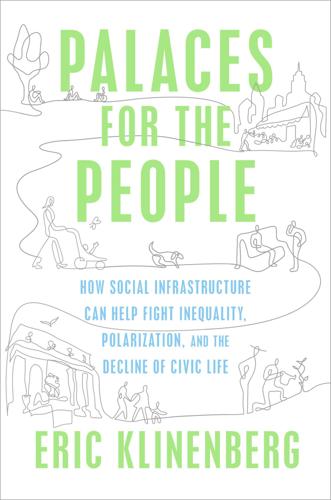
Palaces for the People: How Social Infrastructure Can Help Fight Inequality, Polarization, and the Decline of Civic Life
by
Eric Klinenberg
Published 10 Sep 2018
The groceries disappeared too. By the 1980s, Pugh told me, Englewood had become “the heart of Chicago’s food desert”—the term that the US Department of Agriculture uses to describe urban areas where people have limited access to supermarkets, supercenters, or large grocery stores. The USDA reports that about 13 percent of low-income census tracts are food deserts, and in these areas, the absence of healthy food can be just as dangerous as the presence of gangs and guns. According to the US National Academy of Sciences, living in a food desert is associated with obesity and a host of chronic, diet-related diseases. It makes residents, including children, more likely to drink soda and consume processed foods that are high in salt, sugar, and chemical preservatives.
…
But after four years of remediation, which involved bringing in truckloads of new soil, building good relationships with nearby residents, and persuading the city to amend a local zoning ordinance, Growing Home opened the Wood Street Urban Farm in Englewood. It was Chicago’s first organic urban farm. Two years later, it opened the Honore Street Farm nearby. “Our goal,” Rhodes told me, “is to turn Englewood from a food desert to a food destination.” Rhodes understands that it will be a long, difficult process, and he vividly recalls how bad things were when the farm project began. “Before we got to Englewood most people didn’t have access to fresh produce,” he explained. “They got their food from corner stores, Walgreens, or the gas stations in the area.
…
They saw that we had something to offer. And since then it has been pretty peaceful here. The gardens are just beautiful places. We’re trying to build new ones too, because it’s clear that the neighborhood needs more.” Englewood is still far from a food destination, but Growing Home is helping to end the food desert. Its two farms are producing a steady supply of fresh produce, and they now run a weekly farmers’ market with cooking classes. Recently, two other community organizations built farms on empty lots nearby, and Kusanya, a locally owned nonprofit café, opened there too. The neighborhood, long stigmatized as a den of urban violence, is slowly gaining a reputation as a special place for urban agriculture.

City on the Verge
by
Mark Pendergrast
Published 5 May 2017
A supervising corrections officer said that it was hard to keep out people who really wanted to break in. He had thrown the same man out of a vacant house three times. The last time the man had broken in through the roof. “His mother lived near there,” the officer explained. Food Deserts In addition to containing blighted residential neighborhoods, the southern and western areas of Atlanta are also notorious “food deserts,” where grocery store chains such as Publix and Kroger are few and far between, while corner stores proffer fatty junk food and sodas. Ironically the American poor are generally more overweight than the rich, and obesity is 51 percent more prevalent among African Americans than among whites.
…
In the early twentieth century, most of these neighborhoods were upper-class white streetcar suburbs, as was Adair Park. After World War II, when whites fled to the suburbs and poorer African Americans moved in, neighborhood stores and industries failed, and the area fell into decline. Aside from the Kroger and Big Bear supermarkets in West End, the area is a “food desert,” with junk food and liquor far easier to find than fruits and vegetables. We end our day, late in the afternoon, in the Washington Park neighborhood on the west side, halfway around the loop. Four months later, in April 2012, I meet Ryan Gravel and Angel Poventud again at Washington Park to resume our walk clockwise around the northern part of the BeltLine.
…
If only something could go there to provide desperately needed jobs for Pittsburgh residents! The Casey Foundation chose a development team later that year that tentatively planned to avoid the top-down “one big project” trap that Atlanta has frequently fallen into. Instead, it planned a mix of small retail businesses, including a grocery store in the heart of this food desert. If one business failed, another could hopefully replace it. I returned to the Starr residence four months after my first visit for another potluck and was pleased that seven-year-old Ava remembered me fondly as the man who wrote Jack and the Bean Soup, my fart-joke children’s book, which I had given her.
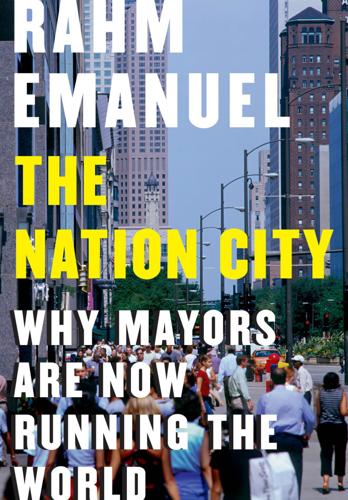
The Nation City: Why Mayors Are Now Running the World
by
Rahm Emanuel
Published 25 Feb 2020
I made them a deal: If they opened a new grocery store in one of the neighborhoods that was a food desert—even if it was bundled with, say, three other stores in other parts of the city—we’d fast-track their permit applications, saving time and money. (We made a significant dent in the food desert population, but so much more work needs to be done.) And then we opened an entrepreneur-focused shared kitchen in Garfield Park on the West Side of the city, called the Hatchery, where food and grocery-product entrepreneurs could come together to share ideas and resources, and connect with the city’s grocers to sell their new products in stores in the food deserts and beyond. We also rewrote our urban farming policy to copy Milwaukee’s.
…
Housing values, graduation rates, population, and employment are all up, and crime is down. That a centerpiece of Bronzeville’s revival has to do with restaurants and grocery stores was no accident. When I took office, some 400,000 Chicagoans did not live within a mile of stores that offered fresh fruits and vegetables and meat. We knew we needed to do something about these food deserts. So we decided to make food a significant piece of the economic growth in Chicago. We tackled the issue from the macro to the micro level. I went out and recruited the James Beard Awards Dinner from New York City. I recruited ConAgra from Omaha, ADM from Decatur, McDonald’s from Oak Brook, and Kraft Heinz from the suburbs as well, among other food companies, all of which relocated their international headquarters to the city.
…
In 2018 we cut a ribbon at a new Jewel grocery store there. That sounds inconsequential, right? It’s less so when you consider the fact that it is the first real grocery store, with a pharmacy and healthy food options, that has opened in Woodlawn in the last forty-seven years, eliminating another food desert on the South Side of Chicago. The Chicago Tribune has highlighted the rebirth of Woodlawn, symbolized by this grocery store. We also built a new school, and four new retail stores and a bakery have also opened recently, with the help of our Neighborhood Opportunity Fund. There is a new MetroSquash facility down the block, which provides opportunities to learn and play squash along with mentoring and academic help.
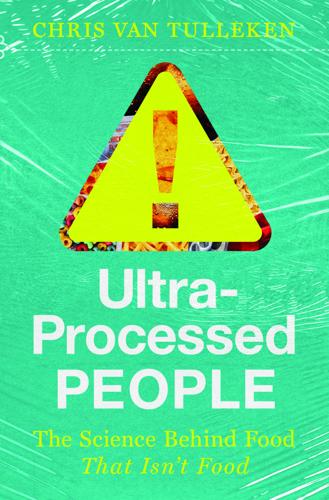
Ultra-Processed People: The Science Behind Food That Isn't Food
by
Chris van Tulleken
Published 26 Jun 2023
You may have heard of food deserts – places where shops simply don’t sell fresh food and healthy groceries and only UPF is available. There are over 6,500 food deserts in the USA according to the US Department of Agriculture. They’re found in areas with higher levels of poverty and higher percentages of ethnic minority populations.2 In the UK, over 3 million people do not have a shop selling raw ingredients within 15 minutes of their homes by public transport.3 This means it is difficult to source real food – let alone cook it. Anyway, food swamps of the type Xand found himself in are similar to food deserts. Fresh food may be available, but it is submerged in a swamp of fast-food outlets selling UPF.
…
Smucker, 296 Johns Hopkins University, 90 Jones, Julie Miller, 65 Journal of the American Medical Association, 93 Judaism, 101 junk DNA, 2 juvenile arthritis, 214n Kaiser Wilhelm Institute, 69 Kantar Worldpanel, 129 Katzmarzyk, Peter, 122, 123, 133, 134 Kellogg’s, 30, 52, 205n, 254, 274, 275, 295, 299–300 Kelly’s ice cream, 280–81 Kennedy, Edward ‘Ted’, 289, 290 Kenny, Paul, 163 Kenya, 246 Keppler, Wilhelm, 70, 71 Kerry Group, 64–5, 178, 179, 295 keto diets, 109, 116 KFC, 37, 140–41, 243–6, 297 Kinder, 299 KitKat, 141, 237, 248, 249 Konigsberg, Moses, 21 Kraft, 21, 27n, 101n Kraut, Hans, 75 Kuhn, Richard, 72n labelling, 30–31, 35, 39, 63, 160, 179, 210, 272, 299 traffic light system, 30–31, 39, 63 lactase, 25 Lancashire neck, 42 Lancet, The, 45, 210, 291 Lansley, Andrew, 27n lasagne, 36, 39, 159–60 Latin American Nutrition and Health Study, 135 Lean Cuisine, 285 lecithin, 15, 211, 240 Leicester, Leicestershire, 139–40, 142–3 Leon, 264 leptin, 104, 137n, 160, 191 leukaemia, 45, 214n Liberia, 286 Libya, 25, 68–9, 74 Lieberman, Daniel, 175 Life on the Mississippi (Twain), 27n lignite, 69 Llewellyn, Clare, 138, 144, 177 locust bean gum, 15, 22 London School of Hygiene & Tropical Medicine, 134 Lopinavir, 228 Louis Dreyfus Company BV, 277 low-carb diets, 111–17 low-fat diets, 22–3, 110–16 Loyola University, 130 Luke, Amy, 130 lung cancer, 9, 45 Luxembourg, 209 M&S, 159, 264, 267, 302 MacKenzie, Paula, 297 Maffini, Maricel, 226, 229, 230, 231, 233, 235 magnesium, 85 Mali, 247, 286 malnutrition, 6, 8, 42, 191, 288–94 maltitol, 154 maltodextrins, 22, 36, 195, 200, 203, 208, 219–20 manganese, 85 mango kernel fat, 29 margarine, 26, 28n, 45 marketing, 6, 8, 9, 11, 39, 55, 58, 107–8 children and, 31, 39, 40n, 58, 140–41, 299 games, 140–41 Mars, 65, 275, 295 marshmallow experiment, 148–9 Mary Rose, 175 Mato Grosso, Brazil, 240, 263 matrix, 171 Mauritania, 286 Maxson Food Systems, 151 mayonnaise, 21, 23, 36 Mbuti people, 118 McCain Foods, 66 McCoy’s, 253 McDonald’s, 16, 37, 44, 101n, 140, 173, 176, 246, 298, 301 McEvedy, Allegra, 304 McMaster University, 53 McVitie’s, 251 meat production, 259–63 Medical Research Council, 59, 201 Mège-Mouriès, Hippolyte, 26 melting-point profiles, 24 Mennella, Julie, 186–7 mental illness, 216 Messak Mellet, Libya, 25 metabolic diseases, 216, 219, 227, 233 diabetes, 35, 62, 110, 198, 201–4, 216, 218, 220, 227, 241 metabolism, 54, 113, 116, 123, 126, 129, 203, 271 methyl folate, 192 Mexico, 65, 200, 268, 291 microbiome, 87–8, 155, 204, 213–21, 271, 289 micronutrients, 100, 190–92 Mignon Morceaux, 254 milk, 19, 24, 25, 46, 95, 189, 196, 214, 274 Milken Institute School of Public Health, 202 milkshakes, 22, 177, 217 Mills Group, 205n Mischel, Walter, 148–9 mitochondria, 82 Mohinani, Ashok, 247 molybdenum, 85 Mondelēz, 65, 66, 295 Monell Chemical Senses Centre, 186 monosodium glutamate (MSG), 163, 197, 246 Monroe, Jack, 304 Monteiro, Carlos, 32–4, 38, 40–60, 92, 106, 118, 125, 157, 238, 255, 288 Moon, 79 Morrisons, 151–2, 159 Motherland (Thompson), 245 Moubarac, Jean-Claude, 48 Mount Sinai Hospital Chicago, 93 New York, 153 MRI scans, 37, 160–62 Ms Molly’s Vanilla, 19 Muaná, Brazil, 241–2, 248, 265 Müller, 217 multivitamin supplements, 47 muscle proteins, 89n Najafi, Ibrahim, 279–81 Napoleon III, Emperor of the French, 26 National Diet and Nutrition Survey (UK), 126 National Health and Nutrition Examination Survey (US), 127 National Institute of Diabetes (US), 53 National Institutes of Health (US), 56, 201 National Toxicology Program (US), 232 Nature, 2, 204, 218 Nazi Germany (1933–45), 70–75 NBC News, 213 necrotising enterocolitis, 216 Neltner, Tom, 226, 228, 229, 230–31, 233, 235 Neolithic period, 259 Nestlé, 121, 141, 179, 202n, 267, 279, 284–90, 295–6, 298 baby formula, 236, 288–90, 292 Better Food Index and, 298 Brazil, 236–8, 241–3, 248, 289 health research, 285 research funding, 64, 65, 293 Netherlands, 140–41, 178, 191, 240 neuroimaging, 37, 160–62 Neurology, 62 New England Journal of Medicine, 115 New Internationalist, 289 New Testament, 101 New York Times, 46, 68, 101n, 237, 286 Newson, Sharon, 146–7, 148, 165 nicotine, see smoking NielsenIQ Brandbank, 40 Niger, 25, 286 Nigeria, 130, 246, 268, 286, 291 Nisa, 205n nitrates, 227 nitrogen, 85 Norgalax, 217 Normal Child, The (Brown), 93 Northeastern University, 189 Northwest Passage, 42 Norway, 17 NOVA system, 32–4, 47–8, 51, 56, 58–9, 63–6, 142, 158–60, 255, 294, 301–302 Novaes, Lizete, 242, 243 Nutella, 28, 258 Nutri-Grain bars, 274–5 Nutri-Score system, 63 Nutrient Profile Model (NPM), 40 NutriSource, 57 Nutrition Reviews, 47 Nutrition Science Initiative (NuSI), 112, 116 Nutrition Science Partners Limited, 285 nutritionism, 38–9 O’Rahilly, Stephen, 107 obesity; weight gain, 6–9, 32–7, 64, 100–108, 247 anti-fat bias, 6 BMI and, 50, 54, 138n, 242 definition, 50 diet experiments, see diet experiments disease, 7–9 energy density, 66, 176–7, 271, 301 environment and, 139–40, 142–4 exercise and, 122–36 genetics and, 126, 138, 144–5, 147, 148, 177 micronutrients and, 191 policymaking and, 294–302 poverty and, 9, 41–2, 45, 55, 60, 143, 144–5, 149, 233 regulation system, 102–8, 173 shame and, 147 speed of eating, 177–8 sugar and, 110–21 willpower and, 7–8, 137–50 obesogenic eating style, 177 Ocean Spray, 120 oestrogen, 132 Ofcom, 40n Ohio River, 212 oils, 5, 10, 15, 19, 26–9, 67 environmental impact of, 258–9 hydrogenation, 26–7, 33, 231, 246 RBD (Refined, Bleached & Deodorized), 28–9, 33, 258 oily fish, 47, 188–9 Olam International, 277 Old Testament, 101 Oleomargarine, 26 Oliver, Jamie, 264, 296–7, 298–9 Olney, Richard, 44 operationalisation, 38 Oracle Shopping Centre, Reading, 122 organophosphate pesticides, 227 ortho-phthalates, 227 Ostrowski, Matthew, 220 overbites, 174 Oxford University, 134 oxygen, 81, 82, 85 packaging, 52, 58, 264 labelling, 30–31, 35, 39, 63, 160, 179, 210, 264, 299 plastics, 155, 227, 267–8, 272 PAI, 279 palm fat, 29, 154 palm oil, 19, 28, 29, 258–9, 277 palm stearin, 19, 29 pancreas, 111, 194n pandemic diseases, 260 Panodan, 212 papillae, 194 Pará river, 238, 239, 241 parabiotic pairs, 103 paraffin, 70 Pastoral da Criança, 242 pectin, 87 pellagra, 42 PepsiCo, 54, 65, 101n, 120, 121, 202, 203, 205n, 267, 295–6 peptides, 105n perchlorate, 227 per- and polyfluoroalkyl substances (PFAS), 227 Percival, Rob, 256–7 Perdue, George ‘Sonny’, 134 perfluorooctanoic acid (PFOA), 212–13 Persil, 70 pesticides, 227, 257, 263 phenylalanine, 188 Philippines, 268 phosphoric acid, 22, 28, 198 phosphorus, 85 phytochemicals, 191 pies, 22 piles, 157 pizza, 45 Pizza Hut, 27n, 140 plastics, 155, 227, 267–8, 272 Plowman, Robert, 276–9, 298 policymaking, 135, 294–302 Pollan, Michael, 46 polybrominated-diphenyl-ethers, 227 polyphenols, 189 polysorbates, 211, 217–18, 234 Pomar, Fruteira, 242 Pontzer, Herman, 129–32 porridge, 30 potassium, 85 potatoes, 21 poverty, 9, 41–2, 45, 55, 60, 143, 144–5, 149, 233 pregnancy, 186–7 Premier, 205n preservatives, 25, 36, 45, 88, 155, 174, 176, 208, 210, 271 Pret a Manger, 208, 264 Princeton University, 153 Pringles, 27, 193–4, 206, 250–53 probiotics, 16, 215n, 272 Procter & Gamble, 27, 28, 250–53 Prometheus Laboratories, 285 propionate, 88 propylene oxide, 22 proteins, 82, 85, 86, 89n isolates, 5, 154, 240, 261, 285 psoriasis, 90 Ptolemaic dynasty, 101 Public Health England, 205 Public Health Nutrition, 295 Putnam, Judith, 112 PVC, 212 pythons, 88 Quaker Oats, 65 Quarles, Joseph, 28n Quorn, 296 racism, 245 Ramo, Graciliano Silva, 248 rapeseed oil, 28 Rashford, Marcus, 142 Rauber, Fernanda, 155, 163, 165, 168 RBD (Refined, Bleached & Deodorized), 28–9, 33, 258 Reading, Berkshire, 122 ready meals, 151 Reagan, Ronald and Nancy, 151 Real Bread Campaign, 173, 208–9 reconstituted milks, 19 Red Bull, 52 regulation system, 102–8, 173 resting-state scans, 161 reverspective, 180 reward system, 153 Rexona, 217 ribonucleotides, 193–4 Rice Krispies, 119 rickets, 42, 94, 97–8 Ripplins, 254 risotto, 193–4, 206 Rixon, Eddie, 85–8, 92, 99, 215, 274, 298 Roadchef, 296 Rodinia, 83 Royal College of Paediatrics and Child Health, 292 Russia, 186n saccharin, 90–91, 194n, 201 Sadler, Christina, 65–6 saffron, 188n sagebrush, 87 Sahara Desert, 25 Sainsbury’s, 158, 159–60, 264 salad dressings, 22, 24 Salmonella, 264 salt, 39, 109, 156 salty tastes, 195 San Cristobal, Mexico, 200 Sanofi, 73 São Tomé and Príncipe, 286 Schatzker, Mark, 187–92 Schlee, Clive, 208–9 Science in Society Journalism Award, 110 Scientific American, 90 Scrinis, Gorgy, 38 scurvy, 42 sea lions, 197 sedentary lifestyles, 108, 124n, 129–32 Sella, Andrea, 193–4, 206 Senegal, 286 Sensus, 178 shea fat, 29 Shell, 264, 298 Shingler, Suzi, 266 Short, Thomas, 101 Sierra Leone, 286 Silcock, Chris, 254 Sinclair, Hugh MacDonald, 45 Singapore, 177 Skips, 254 Skittles, 52 Slimming World, 296 Small, Dana, 199, 203, 206, 219 smell, 180–92 Smith, Barry, 180–83, 185n, 197n, 203, 304 smoking, 9, 11, 31, 55, 153, 164, 166, 167, 179, 299 snobbery, 44–5 Snowdon, Christopher, 49, 124–9, 132–3 sodium, 85 softness, 66, 166, 172–6, 272, 301 Soil Association, 256 sour tastes, 195, 196 sourdough bread, 174 soy, 28, 33, 237, 239–40, 261, 265 soybean oil, 28 Spain, 62 Spar, 205n Special K, 158 speedballing, 199 Speisefett, 70–74 Splenda, 203 Spotify, 140 Sprigg, Reg, 84 stabilisers, 15, 19, 151 Stanford University, 109, 148–9 star signs, 49–50 Starbucks, 264 starch, taste of, 195 starches, 20–22, 23, 33, 91, 118, 271 ‘stop eating’ signal, 34, 104, 173 Strato-Plates, 151 stress, 9, 11, 132, 143–4, 147 stromatolites, 80 strontium, 85 stunting, 8 substance addiction, 164, 166 Subway, 140 sucralose, 154, 203 sugar, 39, 43, 109–21, 198 artificial sweeteners and, 203 Coca-Cola and, 198–202 dental health and, 120–21 suicidality, 227 sulphur, 85 Sun, The, 125 Sunday Telegraph, 125 sunflower oil, 28, 29 Super Size Me (2004 documentary), 36 Sustain, 173 Swanson, 151 sweet tastes, 195 Sweet’N Low, 91 Switzerland, 178 Swizzels, 15 Syed, Matthew, 137n Sylvetsky, Allison, 202 synthetic carbohydrates, 20–22, 23, 91, 154, 271 synthetic fat, 69–75 systemic connective tissue disorders, 214n Szent-Györgyi, Albert, 82n Taco Bell, 140 Tadrart Acacus mountains, 25 Talmud, 101 tannins, 87, 197 Tanzania, 129–32, 246 Tapsell, Linda, 47, 192 taste buds, 194 tastes, 194–207 Tate & Lyle, 65, 132 Taubes, Gary, 109–17, 124 taxation, 204, 250–55, 279 Tearfund, 267–8 teeth, 120–21, 175, 272 Teflon, 212 Telegraph, 125 Terra Grande, 239, 248 Tesco, 17, 19, 27n, 159, 205n, 217, 264, 296, 297, 298 testosterone, 132 Thompson, Melissa, 245–6 thyroid, 85, 227 Tim Hortons, 140 Time Life, 44 tofu, 240, 261 Togo, 286 tomatoes, 188 tongue, 194 Tony the Tiger, 299 Toop, James, 298 tortillas, 17 Tortoise Media, 298 Towers, Greg, 1 toxins, 4, 86–7, 90, 183, 195n, 196 traditional diets, 19–20, 34, 43–6, 76, 197–8, 236–49, 271 traffic light system, 30–31, 39, 63 trans fats, 27n, 231 trehalose, 220–21 Tropsch, Hans, 69 Trump, Donald, 200, 202, 232n Tums, 285 Turkey Twizzlers, 155 TV Dinners, 151 Twain, Mark, 27n Twiglets, 254 twins, 139, 144 Twisters, 276 type 2 diabetes, 35, 62, 110, 198, 201–4, 216, 218, 220, 227, 241 U-boats, 72 Uganda, 246 Ukraine, 29 ulcerative colitis, 62, 216 ultra-processed food (UPF), 5–11 addictiveness, 153–68, 179, 206–7, 271, 303–4 appetite regulation and, 31, 37, 41, 56–9, 106–8, 160, 173 cost and, 17–20, 58, 255 criticism of concept, 63–6 definition, 6, 32–4, 38, 40–45, 46–51, 53–60, 157–60 diet experiments, see diet experiments dryness of, 176 energy density, 66, 176–7, 271, 301 flavouring, 180–92 health outcomes and, 6, 7, 47, 60, 62, 189, 216, 227 height and, 8, 191 microbiome and, 87–8, 155, 204, 213–21, 271 poverty and, 9, 41–2, 45, 55, 60, 143, 144–5, 149, 233 shelf life and, 15, 17, 18–19, 20, 22, 176 softness of, 66, 166, 172–6, 272, 301 traditional diets, displacement of, 76, 236–49, 271 umami tastes, 195–6 Uncle Tom Cobley, 29 Unilever, 16, 18, 22, 267, 275, 298 United Biscuits, 253 United Kingdom, 5, 6, 10, 17–18, 36, 38, 43, 90 breastfeeding in, 293 exercise in, 124–5 food deserts/swamps, 139–40, 142 height in, 191 overbites, 174 poverty in, 145 ready meals in, 151–2 sugar tax, 204, 279 United States, 5, 6, 10, 17, 18, 38, 43, 90 additives in, 210, 225–33 exercise in, 123–4, 125 Floyd murder (2020), 245 food deserts/swamps, 139, 143–4 height in, 191 meat production and, 266 overbites, 174 ready meals in, 151 substance addiction in, 166 Université Clermont Auvergne, 171 University College London (UCL), 1, 10, 31, 35, 37, 160 University of Alabama, 101n University of Amsterdam, 247 University of Bordeaux, 181 University of Melbourne, 38 University of Michigan, 165, 220 University of Minnesota, 47 University of Wollongong, 47 Urban VIII, Pope, 117 valerate, 88 van Tulleken, Xand, 52, 139, 143–4, 147–8, 160, 163–5, 167, 193, 243, 301–302 Vanguard, 281 vanilla, 185n VAT (value-added tax), 251 vegetable oils, 258 vegetable stock, 193 Venus of Willendorf, 101 Viennetta, 276 vinegar, 88 Vinuesa, Vitor, 240 viruses, 1–3 visceral fat, 143 vitamins, 58, 189, 191–2 A, 188, 191, 237 C, 47, 196 D, 30, 94, 97, 191 deficiencies, 42 E, 47, 191 supplements, 47 volatile short chain fatty acids, 87 Waitrose, 159, 264, 274 Walker’s, 299 Wall’s, 15, 64 Warburtons, 296 Wardle, Jane, 138 Warta, 69, 70 Washington Works plant, West Virginia, 212 water cost of, 200 taste of, 195 Watzke, Heribert, 65 Wayback Machine, 237n weight gain, see under obesity weight loss, 54, 108 dieting, 111 exercise and, 122–36 West Germany, 68–9, 74 Westcott, Sean, 286 whales, 102, 197 Wheat Crunchies, 254 wheat, 45 Wheeler-Kingshott, Claudia, 160–62 Willett, Walter, 111n willpower, 7–8, 137–50 Wilmar International Limited, 277 Wilson, Bee, 157 wine, 181 wisdom teeth, 175 Wise, Roy, 156n World Health Assembly, 290 World Health Organization (WHO), 141, 153, 232, 290, 291 World War I (1914–18), 69, 91, 217 World War II (1939–45), 73 worms, 87 Wrangham, Richard, 88–9 Wurzburg, Otto, 22 xanthan gum, 17, 22, 220 xylan, 87 Yale University, 141, 187, 199, 303 Yeo, Giles, 125–6, 138, 139 yoghurt, 16–17, 25, 112, 237 Yollies, 64 YUM!
…
We met in the rain in a park near where she grew up and she passionately explained her view on the responsibility of government to protect children and ensure they have access not just to food but to healthy food. She pointed to the food environment around us, chicken shops lining the road across from the park. ‘I don’t want any child to live in a food desert,’ she told me. ‘Young people have a right to grow up in environments where healthy food is the default option, where it’s attractive, accessible and affordable.’ Like the teenagers I met in Leicester, Adane is acutely aware of how much influence the food industry has over her and her friends: ‘It is deeply scary how successful junk-food companies have been in infiltrating youth culture.

Poverty for Profit
by
Anne Kim
See also privatization of government services Federal Trade Commission (FTC), 32, 147–48, 179 Fines and Fees Justice Center, 165, 167, 312n210 Florida: bail statute and bail bonds industry, 160; Job Corps centers, 90–91, 94; LIHTC program costs and developer fees, 203; prison industries, 183; prison room and board fees, 182; WOIA-funded job training programs, 74 food and nutrition assistance, 206–19; emergency pandemic benefits, 206–8, 215; and “food deserts,” 210–11; and low-nutrition processed foods, 207, 211, 213–15, 217–18, 230–31; National School Lunch Program, 4, 8, 206–7, 212–19, 230–31; SNAP (formerly “food stamps”), 4, 35, 61, 206–12, 228, 232; and USDA’s federal nutrition standards, 214, 216; WIC, 206–7. See also National School Lunch Program; Supplemental Nutrition Assistance Program (SNAP) food deserts, 210–11 food service management companies (Big Food): and the National School Lunch Program, 207, 213–15, 216–19; and prison food services, 177–78, 180 food stamps.
…
As of fall 2023, the chain operated more than nineteen thousand stores across the country, making it the nation’s largest retailer by store count.105 (Dollar General stores, in fact, significantly outnumber Walmarts, of which there were 4,616 in 2023.106 Dollar General even outpaces McDonald’s by about five thousand outlets.)107 Dollar General also ranked twelfth among the nation’s largest grocers in fiscal 2021, ahead of well-known chains like Aldi and Trader Joe’s, according to industry publication Supermarket News.108 Once again, its strategy has been to fill in the gaps traditional grocers have left by colonizing what would otherwise be “food deserts” in low-income urban and rural areas. “We generally locate our stores and plan our merchandise selections to best serve the needs of our core customers, the low and fixed income households often underserved by other retailers (including grocers),” acknowledges the company’s annual rseport.109 Nearly 24 million Americans live in low-income areas “that are further than 1 mile from a large grocery store or supermarket,” according to the federal government’s Healthy People 2030 project.110 Likewise, a 2012 government study identified 1,519 “Limited Supermarket Access” areas nationwide, where residents “must travel significantly farther to reach a supermarket” compared to residents in well-served areas.111 Predominantly Black and Hispanic neighborhoods are much less likely to have a supermarket than neighborhoods that are predominantly white;112 conversely, Black Americans are more than twice as likely to live in limited supermarket access areas than whites.113 Lack of access to healthy food, in turn, worsens racial and economic disparities in health outcomes, such as higher rates of obesity and diabetes, cardiovascular disease, and cancer.114 But Dollar General’s arrival in low-income communities has hardly turned food deserts into oases.
…
“We generally locate our stores and plan our merchandise selections to best serve the needs of our core customers, the low and fixed income households often underserved by other retailers (including grocers),” acknowledges the company’s annual rseport.109 Nearly 24 million Americans live in low-income areas “that are further than 1 mile from a large grocery store or supermarket,” according to the federal government’s Healthy People 2030 project.110 Likewise, a 2012 government study identified 1,519 “Limited Supermarket Access” areas nationwide, where residents “must travel significantly farther to reach a supermarket” compared to residents in well-served areas.111 Predominantly Black and Hispanic neighborhoods are much less likely to have a supermarket than neighborhoods that are predominantly white;112 conversely, Black Americans are more than twice as likely to live in limited supermarket access areas than whites.113 Lack of access to healthy food, in turn, worsens racial and economic disparities in health outcomes, such as higher rates of obesity and diabetes, cardiovascular disease, and cancer.114 But Dollar General’s arrival in low-income communities has hardly turned food deserts into oases. As essentially souped-up convenience stores, Dollar General and similar chains offer inventories heavily stocked with cheap, highly processed foods and scant availability of fresh produce (you could say their bread and butter are Tastykake and Parkay). It might be great for the company’s bottom line, but not for consumers’ health.
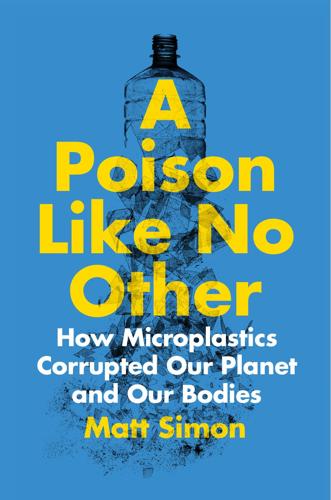
A Poison Like No Other: How Microplastics Corrupted Our Planet and Our Bodies
by
Matt Simon
Published 24 Jun 2022
In the US and other developed countries, the disproportionate number of poor folk and people of color living in food deserts—neighborhoods where grocery chains don’t bother setting up shop—might only have easy access to processed foods mummified in single-use plastic, 165 166 a poison like no other maybe from a corner store. And remember what Leonardo Trasande found in his study, that people with higher levels of phthalates used in food packaging are more likely to die of heart disease. “I think about food deserts and the lack of accessibility to plastic-free food, and what kind of impact that might mean for these models that are predicting how much we’re eating and we’re interacting with,” says Imari Walker, the environmental engineer we met in the first chapter.
…
See also bisphenols; PFAS; phthalates epichlorohydrin, 133 equity, 165–166 Erdle, Lisa, 32, 50 Eriksen, Marcus, 13, 156 ethylene, 16, 19 exposure, 134 face masks, 128 farm animals, 103–105 fashion industry, 32, 158–159 fast fashion, 32, 158–159 fecal express, 60–63 Feit, Steven, 162 fertility, 140 fertilizers, 85–88, 87–90 fibrillation, 124 field greenhouses, 90–91 filament yarns, 37 film, 10 filter feeders, 5, 49, 74 filtration, 25–26, 33, 36, 157 fish animal feeds containing, 103 aquaculture and, 73–74 food chain and, 64–67 tires and, 77–80 translocation and, 70–74 fishing vessels, 46–48 fishmeal, 73–74 fissures, 95 flagella, 60 Flaws, Jodi, 138–144 fleece, 32–38, 124, 129 flock workers lung, 132 flooring, 126, 141 Flury, Markus, 100–102 flushable products, 39 Foley, Carolyn, 69 food chain/ food web, 53–54, 63–64 food deserts, 165–166 food dilution, 65–68 foods, estimates of consumption in, 109–110 formaldehyde, 22 Formosa Plastics, 29 fossil fuels, 7–8, 17 Fourier transform infrared spectroscopy (FTIR), 26 free radicals, 23 Frontier Logistics, 29 fungi, 99, 149–150 gastrointestinal issues, 150–151 Germany, 47, 86 237 238 index ghost netting, 46 Gilbreath, Alicia, 84 gills, 66–67 Gkoutselis, Gerasimos, 149–150 Glasgow, Scotland, 35 global plastic toxicity debt, 21 global warming, 44–45, 51, 61–62, 84–85 granulomas, 151–152 grasses, 98–99 gravity, 115 Great Lakes, 50, 107 Great Pacific Garbage Patch, 4, 45–46, 54, 155–156 Green, Dannielle, 82, 98–99 Green, Michael, 164 green spaces, 84 greenhouse gases, 17–18, 162 greenhouses, 90–91 groundwater, 4, 107 hair follicles, 151 HDPE.
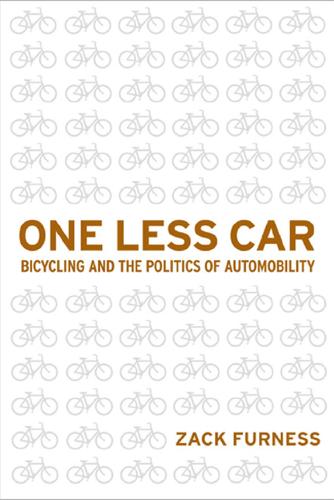
One Less Car: Bicycling and the Politics of Automobility
by
Zack Furness
and
Zachary Mooradian Furness
Published 28 Mar 2010
For example, independent grocery wholesalers saw a rapid decline from 1990 to 2007 (from more than 350 to less than 100) while 5 corporations now account for roughly half of national grocery sales in the United States. in addition to the scarcity of grocery stores and fresh produce in many cities (areas known as food deserts), the number of farms nationwide plummeted from 6.8 million in 1935 to 2.1 million in 2002 (black-owned farms decreased from 14 percent of all farms in 1925 to less than 1 percent in 2003). Consequently, food travels 50 percent farther than it did two decades ago. Corporate consolidation and the subsequent geographic dispersal of basic amenities is similarly evident with hospitals (the total number in the United States declined from 7,156 in 1975 to 5,764 in 2003), local retail (50 percent of independent bookstores went out of business between 1990 and 2002; 33 percent of independent music stores closed since 1998; more than 4,000 independent video stores closed since 2000; and about 5,000 independent hardware stores closed since 1990), and schools.
…
For more on these issues, see Brian Halweil and Thomas prugh, Home Grown: The Case for Local Food in a Global Market (Washington, DC: Worldwatch institute, 2002); anuradha Mittal, “Giving away the Farm: The 2002 Farm Bill,” Food First Backgrounder 8, no. 3 (2002): 1–5; Stacy Mitchell, Big-Box Swindle: The True Cost of Mega-retailers and the Fight for America’s Independent Businesses (Boston: Beacon press, 2006), 10–11; Hillary J. Shaw, “Food Deserts: Towards the Development of a Classification,” Geografiska Annaler: Series B, Human Geography 88, no. 2 (2006): 231–247; United american nurses, “The Hospital industry (Figures from the national Center for Health Statistics and american Hospital association),” United American Nurses (March 2005), available at http://www.uannurse.org/research/trends.html; S.
…
108th Cong., 1st Sess., november 14, 2003. Septimus, Jacob, and anthony Howard. B.I.K.E. Fountainhead Films, 2007. Film. Shaw, Donald lewis, and Maxwell E. McCombs. The Emergence of American Political Issues: The Agenda-Setting Function of the Press. St. paul: West publishing, 1977. Shaw, Hillary J. “Food Deserts: Towards the Development of a Classification.” Geografiska Annaler: Series B, Human Geography 88, no. 2 (2006): 231–247. Sheller, Mimi, and John Urry. “The City and the Car.” International Journal of Urban and Regional Research 24, no. 4 (2000): 737–757. Shelter. When 20 Summers Pass. victory records, 2000. lp.
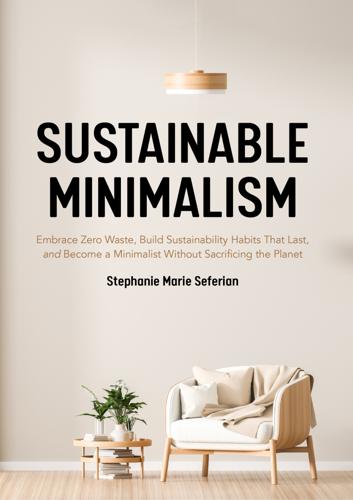
Sustainable Minimalism: Embrace Zero Waste, Build Sustainability Habits That Last, and Become a Minimalist Without Sacrificing the Planet (Green Housecleaning, Zero Waste Living)
by
Stephanie Marie Seferian
Published 19 Jan 2021
Decluttering is a direct consequence of abundance, and making the choice to live minimally in itself demands a certain privilege. Admittedly, there is some truth to this reputation of exclusivity. While organic food is more eco-friendly than pesticide-laden produce, organic food is both more expensive and nonexistent in food deserts without access to healthier options. Food deserts are most often found in low-income, minority communities—wealthy, predominately white neighborhoods contain an average of four times as many supermarkets as predominantly black ones.30 Then there are the higher price tags on eco-friendly products. While many goods have green alternatives—and while the luxury of choice is indeed a major benefit for consumers—green products are almost always more expensive than their conventional counterparts.
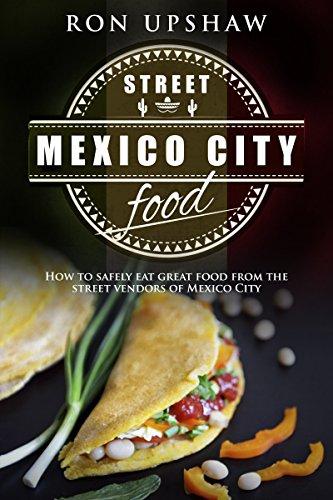
Mexico City Street Food: A Travel Guide for the Curious Eater. How to Safely Enjoy the Delicious Foods From the Street Vendors of Mexico City.
by
Ron Upshaw
Published 24 Nov 2015
That is the inspiration for this e-book. In fact, if you're anything like me, you may have taken entire trips just for the food. A trip to Santa Fe must be booked during the peak of green chile season and a visit to Nashville isn’t complete without BBQ and biscuits from Loveless Cafe. Don't tell my relatives, but if they lived in a food desert, I would visit far less often. I don’t intend to give you a comprehensive guide to all things Mexico City, that seems like an impossible task. But the street food scene, that is something I’d like to tackle. When I started planning my own trip to Mexico City, I was hard pressed to find any book on the vibrant street food scene.

Meet the Frugalwoods: Achieving Financial Independence Through Simple Living
by
Elizabeth Willard Thames
Published 6 Mar 2018
There wasn’t a grocery store in my immediate neighborhood, but after a few weeks my roommates and I found a Key Food eleven blocks away, which had cramped aisles of mostly canned and frozen goods with flyspecked fluorescent lights overhead. Despite reading about them, I’d never understood what it felt like to live in a food desert. I had $120 in food stamps every month, which was another benefit of AmeriCorps. Since my rent was $500 a month and I brought home $833.33 every month (and was trying to save as much of that $333.33 as humanly possible), I couldn’t afford to spend any more than the food stamp allotment on my meals.
…
Since my office provided a pizza lunch every Friday, I’d stuff myself and then take home all the leftovers I could squeeze into a gallon-size ziplock bag I’d bring from home and wash out each week. I was dizzy with excitement the hour before the pizza was delivered, steaming hot and delicious with doughy, garlicky knots as an appetizer. I’d learned about poverty in college, and food deserts specifically, but none of that effectively conveyed what it feels like to carry a week’s worth of cheap groceries home, the plastic bag handles digging into my wrists, for an eleven-block walk over urine-soaked sidewalks with people asking me to give them my food and me feeling guilty for not giving it to them because I just could not repeat the ordeal.
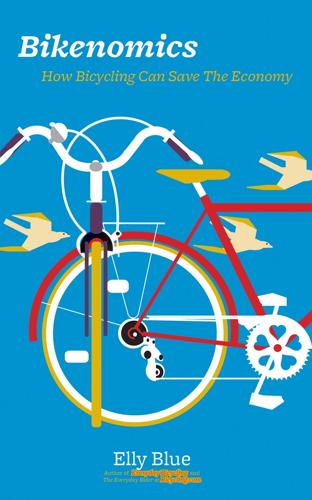
Bikenomics: How Bicycling Can Save the Economy (Bicycle)
by
Elly Blue
Published 29 Nov 2014
The national discourse about health focuses far more on problematic metrics like body weight rather than policies and environmental factors that can either limit or expand our choices. The so-called obesity epidemic is made up of a number of chronic diseases, some of which have been found to correlate with body weight; but the size of our streets is much more to blame in causing them than the size of our bodies. Take food deserts—places where grocery stores and healthy food are few and far between. Food deserts exist in any kind of place; urban, suburban, or rural, and they are both a cause and a result of the breathtaking inequities built into the pattern of our streets. Grocery stores are particularly hard to find in low income neighborhoods. In many, liquor stores are far more prevalent, as are corner stores that stock only highly-processed, packaged foods that are extremely caloric, full of carcinogens, and high in saturated fats—the kind of food that makes you feel crappy all day and die young.
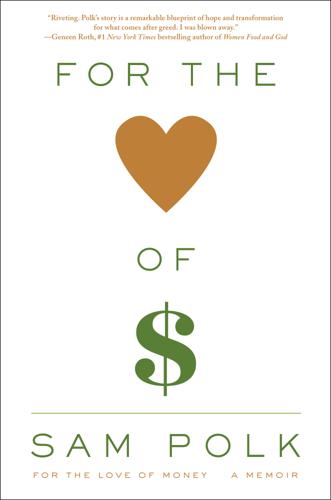
For the Love of Money: A Memoir
by
Sam Polk
Published 18 Jul 2016
It was about hunger in America—how, in the richest country in the world, millions of people, many of them children, don’t know where their next meal is coming from. What really blew my mind was the point the film made about the confluence of poverty and obesity. Poor families in America often live in food deserts, where little produce is available, and lots of fast food. They might skip one meal, but eat KFC at the next because that’s all that’s available, which is part of why the poorest Americans are the most obese. That broke my heart. I remembered my childhood, how there was never enough money but too much violence, and how I’d turned to food to quell my fear and anxiety.
…
The thought of kids living just five miles from me who didn’t know where their next meal was coming from, who were under deep emotional stress, and who couldn’t stay healthy because there was no healthy food around—that just seemed too much, too hard. Kirsten and I decided to do something. We founded Groceryships (“Scholarships for Groceries”), a nonprofit working at the intersection of poverty and obesity. Groceryships helps moms living in food deserts to get themselves and their families healthy. When a mom joins, she becomes part of a group of ten other moms. For six months, these moms meet weekly for two hours to learn about nutrition, healthy cooking, and practical skills about how to navigate an unhealthy environment. The meetings are structured as support groups—most of the two hours is spent talking about family, stress, and other emotional issues surrounding food.
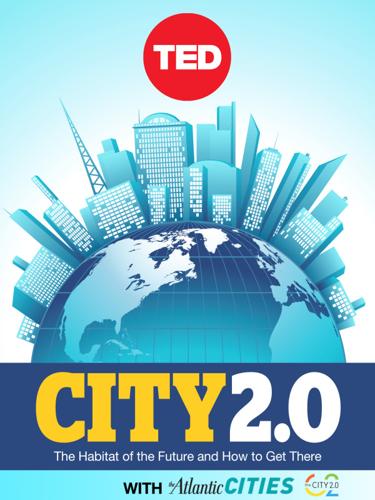
City 2.0: The Habitat of the Future and How to Get There
by
Ted Books
Published 20 Feb 2013
The future could see us integrate solar panels on a greenhouse roof with waste heat streams from server farms within a building, possibly even creating zero-emission urban farms. Additional integration synergies are yet to be explored. The urban sanctuary I envisioned in Graber’s lab is coming to life. Our farm and others like it can transform urban communities from food deserts into living oases where fresh food is grown, delivered, and directly consumed. Now it’s time for pioneers and entrepreneurs around the world to expand this reality and bring a fresh revolution into our cities, one fish and one tomato at a time. Watch Roman Gaus’ TEDxZurich Talk here. An elevated freeway once made this expanse in front of the San Francisco Ferry Building dark and uninviting.
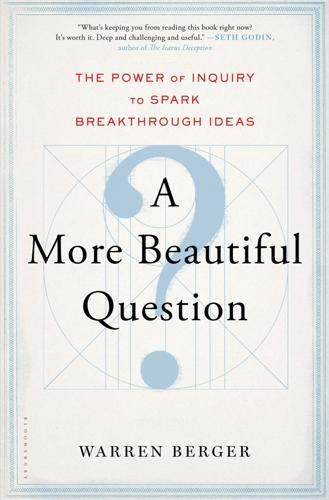
A More Beautiful Question: The Power of Inquiry to Spark Breakthrough Ideas
by
Warren Berger
Published 4 Mar 2014
What came next was a nice little bit of connective inquiry on Rauch’s part: “You start to put the pieces together, then you think, What if you could use one problem to solve the other?” Being a supermarket guy, he knew one place where there was plenty of food—on store shelves—which led to How do we get that food from the supermarket to the food desert? Rauch eventually came up with a potential solution—create an operation that would buy unused food at deep discounts from the supermarkets and from other producers, repackage it as convenient and nutritious take-home meals, and offer it for pennies on the dollar in a large, indoor farmers’ market in Boston.
…
How will you find your Beautiful Question? Why do we have a situation in this country wherein 1 in 6 people is hungry? How can an obese person be hungry? Why does so much good food end up in landfills? What if you could use one problem to solve the other? How do we get food from the supermarket to the food desert? Why not give the food away? How do we do the launch, how do we get people in the door, how do we make the numbers add up? What if we offer a bargain instead of a handout? Should we retire the concept of ‘retirement?’ Can we still afford to have so many people retire in their 60s? Is retirement really the most satisfying, productive way to spend one’s later years?
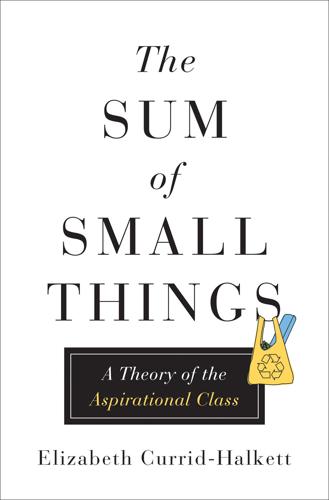
The Sum of Small Things: A Theory of the Aspirational Class
by
Elizabeth Currid-Halkett
Published 14 May 2017
However, for some cities the explanation is economic: Baltimore and Philadelphia are home to a greater share of low-income population. As has been long documented, grocery stores in poorer neighborhoods often do not provide fresh fruit and vegetable options, creating what sociologists and urban planners call “food deserts.” Low-income inhabitants often must rely on processed and high-fat foods to feed their families. Candy, chewing gum, cola, and artificial sweeteners are popular in the Midwest but for the most part are avoided in coastal cities. Northeast cities consistently spend less than the national average by a significant amount.
…
See clothing and fashion Federal Housing Authority (FHA), 9, 152 Fee for Care health care, 72 Ferrari, 14 FHA. See Federal Housing Authority Fischer, Ronald Aymer, 1–2, 221n1 fitness, 100–104 Florida, Richard, 17 food: in cities, 162–63; class as influence on expenditures on, 107–8; as conspicuous production, 117–26; expenditures on, 39, 156; inconspicuous consumption of, 54–57; organic, 119, 125 food deserts, 163 Forage, 122–23, 137 Ford, Henry, 195 Fortnum & Mason, 2 France, 7, 59, 89–91 Frank, Robert, 15, 62, 98, 106 Freeland, Crystia, 189 Freeman family, 187–88 free trade, 146 funerals, 33–34 Fussell, Paul, 50–51 Galbraith, John Kenneth, 9, 24–25, 29, 175, 221n9 gap year, 100 Gaskin, Ina May, 93 Gates, Bill, 99 geographic region: birthing practices by, 94; breastfeeding by, 79; consumption patterns by, 42–43, 43t Germany, 192 Gerscovich, Juan Diego, 128–30, 142 Gershuny, Jonathan, 15, 49, 61 Gertz, Geoffrey, 192–93 Giant, 118 GI Bill, 9, 152 Gill, A.

Lonely Planet's Best in Travel 2020
by
Lonely Planet
Published 21 Oct 2019
The Rocky Mountains loom over the Denver skyline © ERKAN GUNES | EYEEM | GETTY IMAGES Population: 3.2 million Language: English Unit of currency: US dollar How to get there: Denver International Airport is the largest airport in the USA by land area, with direct flights to major hubs in a variety of international destinations. A light-rail line shuttles passengers from the airport to the city centre. Amtrak’s California Zephyr arrives daily from Chicago on its way to San Francisco. ‘The RiNo Art District used to be a food desert, but now we have access to some of the finest restaurants in the region – like Safta, Hop Alley and Cart & Driver.’ -Tracy Weil, president & co-founder, RiNo Art District The 400ft sandstone rocks of the Red Rocks Amphitheatre create awesome acoustics for live concerts © CAPTURE LIGHT | SHUTTERSTOCK TELL ME MORE… In a city that’s always been tied to a frontier spirit of individualism and perseverance, a new breed of community has helped shape a cityscape where you’re as likely to see a pair of cowboy boots as a Tesla.

Lonely Planet Lonely Planet's Best in Travel 2022
by
Lonely Planet
Published 26 Oct 2021
The Rocky Mountains loom over the Denver skyline © ERKAN GUNES | EYEEM | GETTY IMAGES Population: 3.2 million Language: English Unit of currency: US dollar How to get there: Denver International Airport is the largest airport in the USA by land area, with direct flights to major hubs in a variety of international destinations. A light-rail line shuttles passengers from the airport to the city centre. Amtrak’s California Zephyr arrives daily from Chicago on its way to San Francisco. ‘The RiNo Art District used to be a food desert, but now we have access to some of the finest restaurants in the region – like Safta, Hop Alley and Cart & Driver.’ -Tracy Weil, president & co-founder, RiNo Art District The 400ft sandstone rocks of the Red Rocks Amphitheatre create awesome acoustics for live concerts © CAPTURE LIGHT | SHUTTERSTOCK TELL ME MORE… In a city that’s always been tied to a frontier spirit of individualism and perseverance, a new breed of community has helped shape a cityscape where you’re as likely to see a pair of cowboy boots as a Tesla.
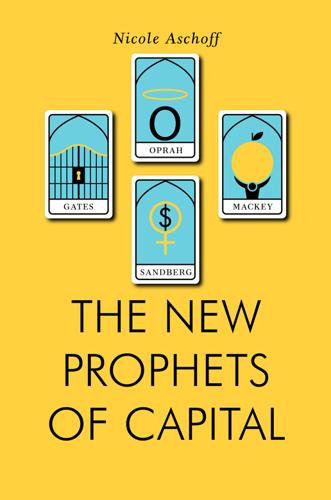
The New Prophets of Capital
by
Nicole Aschoff
Published 10 Mar 2015
Whole Kids puts salad bars in schools, provides nutrition information to school staff, and funds school garden projects; elementary schools in numerous states, including California, Alabama, Ohio, and Oregon, have planted school gardens through the program. Its Whole Cities program is tackling the challenge of urban “food deserts” by providing grants and educational resources to community groups in cities like New Orleans and Jackson, Mississippi. Whole Foods is also a leader in the supermarket field on the ethical treatment of animals: It is a member of the Global Animal Partnership and claims that it uses a rigorous, five-step rating system to promote ethical animal agricultural practices.2 Whole Foods’ “core values” extend beyond philanthropic gestures and selling ethically produced, organic food.

The Rise and Fall of American Growth: The U.S. Standard of Living Since the Civil War (The Princeton Economic History of the Western World)
by
Robert J. Gordon
Published 12 Jan 2016
Analysts have concluded that the relative prices of healthy foods, including fruits and vegetables and lean meats and fish, are beyond the budget constraint of the poorest families. Much has been written about the “food deserts” without a full selection of supermarket food in poor urban ghetto areas, but studies have shown that poor people are just as likely to subsist on sugary, fat, and processed foods near well-stocked supermarkets as in food deserts.22 There is a substantial economic literature on the causes of increased American obesity. One study attributed 40 percent of the change to the declining relative price of food consumed at home.23 However the data underlying figure 10–2 show that although there have been cycles in the relative price of food, there has been no long-run trend up or down in food consumed at home.
…
And the result has been predictable—the conversion of a lean and fit America into the most obese of all developed countries. Tragically the increase in obesity has traveled hand in hand with the increase of income inequality and the failure of the United States to conquer poverty. Urban ghettoes, food deserts, and other symptoms of poverty result in the dependence of poor people on junk food. And the absence of a comprehensive nationwide health care system leaves the poor overly dependent on emergency rooms for the acute care that could have been avoided by provision of preventive medical care across all income levels.
…
The result is routine traffic congestion, not to mention high energy consumption as distances extend from home to work. Increased income inequality has been joined by increased social inequality as the upper part of the income distribution lives in their large houses ever farther from the poor, many of whom are still trapped in central city ghettoes and food deserts. More than for most aspects of the standard of living, the economics of housing location and the locational aspects of the quality of life are intertwined with local politics. The governance of the United States is the opposite of the model of a strong central government that collects revenue at the center and then distributes it rationally according to the merit of projects and the need of the citizens.
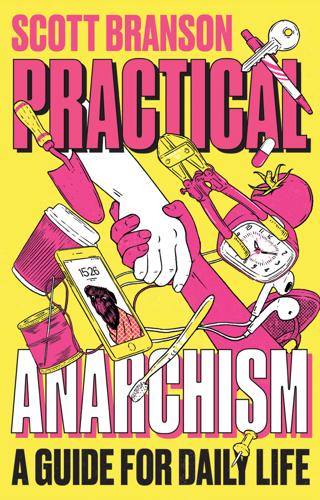
Practical Anarchism: A Guide for Daily Life
by
Scott. Branson
Published 14 Jun 2022
Through the invention of home economics, white women with meager means were driven away from the traditional foodways that fitted living in conjunction with the land towards the need to purchase new cooking utensils and foods. Thus, we have white bread as a staple. Versions of this class-based, racialized, or ethnic degradation of local foodways can be found all over the world, especially as consumer culture monotonizes the available products for us to eat—and as more people come to live in food deserts where the only available shopping is at a poorly stocked gas station mart. In other words, regardless of whether we realize that we are in open conflict with the state, the state is constantly waging war on us, particularly any form of autonomous power that isn’t mediated through state bureaucracy—the gentler side, as the decolonial revolutionary Frantz Fanon argues in The Wretched of the Earth, of the police power that beats people into submission.
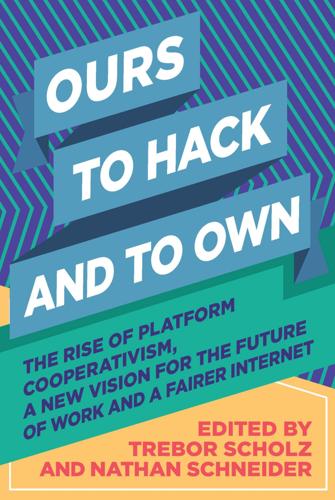
Ours to Hack and to Own: The Rise of Platform Cooperativism, a New Vision for the Future of Work and a Fairer Internet
by
Trebor Scholz
and
Nathan Schneider
Published 14 Aug 2017
Ultimately, platform cooperativism is not merely about countering destructive visions of the future, it is about the marriage of technology and cooperativism and what it can do for our children, our children’s children, and their children into the future. 5. EIGHT FACTS ABOUT COOPERATIVE ENTERPRISE JESSICA GORDON NEMBHARD 1. Cooperative enterprises address market failure and need. They provide rural electricity or other utilities in sparsely populated areas; affordable healthy and organic foods, especially in food deserts; access to credit and banking services; access to affordable housing; access to quality affordable child or elder care; and access to markets for culturally sensitive goods and arts. 2. Cooperatives overcome historical barriers to development in the ways they aggregate people, resources, and capital.

Minimal: How to Simplify Your Life and Live Sustainably
by
Madeleine Olivia
Published 9 Jan 2020
EQUIPMENT AND UTENSILS Measuring cups and spoons Colander/sieve Mixing bowls Chopping boards Wooden/metal spoons Spatula Measuring jug Food grater/zester Sharp knives (knife sharpener) Whisk Kitchen scale Casserole dish Large non-stick frying pan/wok Baking dish Teapot/tea infuser Tofu press Blender Food processor Reusable baking sheet RICE AND GRAINS Basmati rice Brown rice Pasta Noodles Couscous Bulgar wheat Rolled oats/ porridge oats LEGUMES Lentils Chickpeas Kidney beans Black beans VEG Onions Garlic Potatoes STORAGE/REUSABLES Glass jars Tupperware Cotton/mesh produce bags Reusable/travel cutlery SPICES AND SEASONING Sea salt Black pepper Chilli powder/cayenne Chilli flakes Paprika Cumin Garam masala Turmeric Curry powder Cinnamon Nutmeg Garlic powder Bay leaf Stock cubes Nutritional yeast HERBS Mixed herbs Oregano Thyme Basil Dil TINS AND CANS Tinned tomatoes Coconut milk Tomato puree Beans PANTRY OIL Olive oil Vegetable oil Sesame oil VINEGAR Balsamic vinegar Cider vinegar Red wine vinegar Rice vinegar CONDIMENTS Soy sauce Sriracha Mustard Ketchup Brown sauce SUGAR AND SWEETENERS Light brown sugar White granulated sugar Caster sugar Icing sugar Maple syrup Vanilla extract Chocolate Dark chocolate Cocoa powder FLOUR Bread flour Plain flour Whole wheat YEAST Cornflour Bicarbonate of soda and baking powder Seasonal Food Guide While a dietary shift is the biggest change you can make to your food footprint, buying locally and seasonally can also play a significant part in reducing the miles it takes for your food to get to your plate.59 Eating locally has many benefits for the environment, including lowering carbon emissions, paying small-scale farmers and businesses, and supporting the local economy rather than big business multinationals. Food deserts, however, make it near impossible for some to eat locally-grown fresh foods, and instead they must rely on packaged and processed foods. So if you are in a lucky position where you can access fresh fruits and vegetables locally to you, try to make the most of this opportunity. Get onto Google, ask around, and keep your eyes peeled for farmers’ markets and stalls near you.
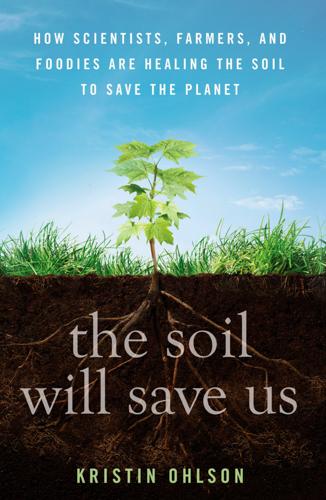
The Soil Will Save Us
by
Kristin Ohlson
Published 14 Oct 2014
I’d survey the offending property for evidence of exposed soil, such as unmulched beds, trees surrounded by wide bare circles, and land rototilled and scraped clean for vegetable plots. I imagined the deprived soil biology in these naked spots shrieking, “Feed me!” like the voracious plant in Little Shop of Horrors. For the living things in the soil, these barren patches are food deserts. Portland has built swales along many streets to catch runoff. Still, I see lots of the same blights on the soil in people’s gardens. Plus, there is an unholy fondness for gravel in Portland: whole tree lawns, even whole front yards covered with stony matter. Perhaps because plants are too much bother?
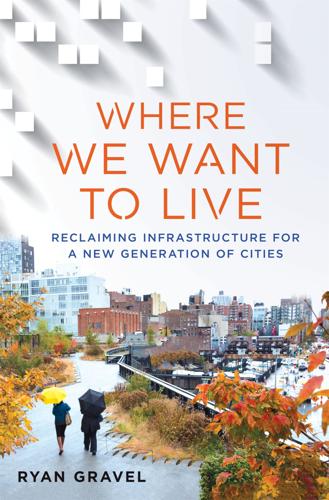
Where We Want to Live
by
Ryan Gravel
Published 2 Feb 2016
Our astonishing momentum attracted more partners to our table and opened the door to a dramatically expanding vision for the project that included things like expansive new parks and affordable housing. For people on the north and east sides of town, the Atlanta Beltline promised to protect their quality-of-life in the face of new density and traffic. For people in the south and west, where generations of disinvestment had left food deserts, abandoned buildings, and blight, it promised to rebalance growth in the city, bringing access to jobs, stores, and other economic activity. For the city’s array of nonprofit organizations who were advocating for pedestrians, bikes, transit, housing, trees, art, or other things, the project offered the opportunity to actively engage on mission-central topics with their core audience and also with the broader community.
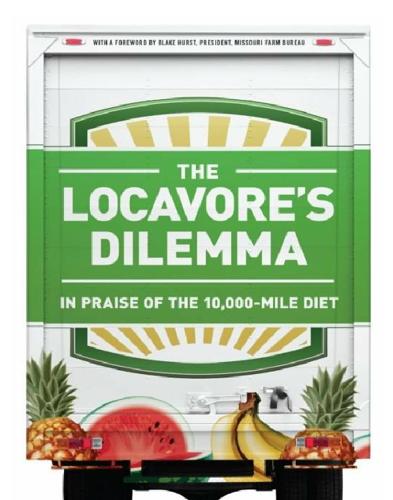
The Locavore's Dilemma
by
Pierre Desrochers
and
Hiroko Shimizu
Published 29 May 2012
The Story of Agricultural Economics in the United States, 1840–1932. Iowa State College Press. The context of such studies was a drastic decline in agricultural commodity prices in the 1920s. 62 See, among others, Michele VerPloeg et al. 2009. Access to Affordable and Nutritious Food. Measuring and Understanding Food Deserts and Their Consequences . United States Department of Agriculture http://www.ers.usda.gov/publications/ap/ap036/ap036.pdf. 63 We will discuss a few of these broader policies in chapter 5, but not the European equivalents of Victory Gardens, such as the “Dig for Victory” campaign in the United Kingdom.
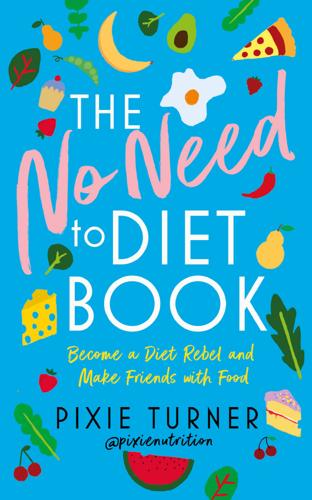
The No Need to Diet Book: Become a Diet Rebel and Make Friends With Food
by
Plantbased Pixie
Published 7 Mar 2019
‘Do features of public open spaces vary according to neighbourhood socio-economic status?’. Health Place, 14(4):889–893. 171. Finkelstein, M.M., Jerrett, M., DeLuca, P., et al. (2003). ‘Relation between income, air pollution and mortality: a cohort study.’ CMAJ, 169(5):397–402. 172. Wrigley, N. (2002). ‘“Food Deserts” in British cities: Policy context and research priorities’. Urban Studies, 39(11):2029–2040. 173. Benzeval, M., Taylor, J., Judge, K. (2000). ‘Evidence on the relationship between low income and poor health: Is the government doing enough?’ Fiscal Studies, 21(3):375–399. 174. Stamatakis, E., Wardle, J., Cole, T.J. (2010).
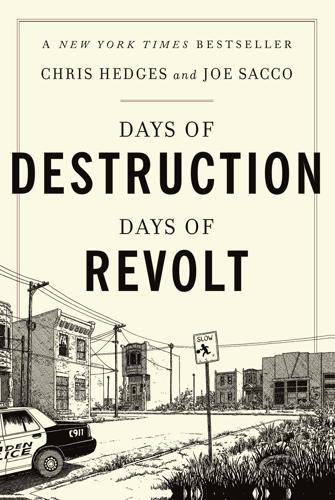
Days of Destruction, Days of Revolt
by
Chris Hedges
and
Joe Sacco
Published 7 Apr 2014
The movie theaters are boarded up or gone. There are no longer any hotels or motels. There are no more factories. There are used car lots, but no new vehicle dealerships. The only supermarket is on the outskirts of the city, isolated from the street crime. Camden, like many poor pockets in the United States, is a food desert. Camden is dominated by Church’s Chicken—where nearly everything on the menu, from Jalapeño Cheese Bombers to the Double Chicken N Cheese, is fried—and doughnut shops. Grease and sugar. Decay and crime. Despair and poverty. Cities and manufacturing hubs across the country suffered similar assaults, but in Camden the breakdown was total, and the city, at least as a self-sustaining community, was obliterated.
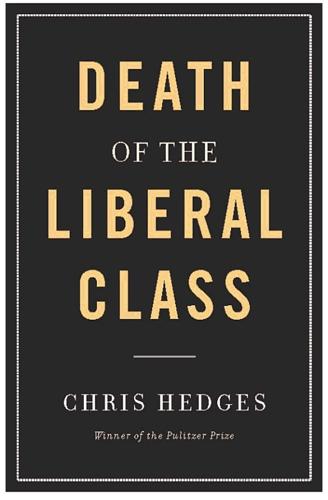
Death of the Liberal Class
by
Chris Hedges
Published 14 May 2010
These communities will have to build walls against the electronic propaganda and fear that will be pumped out over the airwaves. Canada will probably be a more hospitable place to do this than the United States, especially given America’s undercurrent of violence. But in any country, those who survive will need isolated areas of farmland distant from urban areas, which will see food deserts in the inner cities, as well as savage violence, spread outward across the urban landscape as produce and goods become prohibitively expensive and state repression becomes harsher and harsher. Acts of resistance are moral acts. They take place because people of conscience understand the moral, rather than the practical, imperative of rebellion.
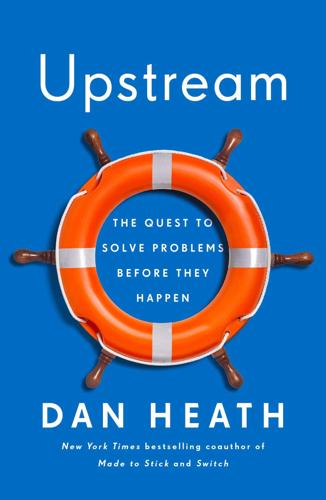
Upstream: The Quest to Solve Problems Before They Happen
by
Dan Heath
Published 3 Mar 2020
Launched in 2010, BHC was a 10-year, $1 billion program to address health inequities in 14 of California’s most challenged communities. How did Iton and his team propose to reverse the odds in these fraught communities? Would they start with a focus on chronic diseases such as diabetes or asthma? By building visible symbols of health such as community gardens? By attracting grocery stores to fill food deserts? No, their vision was to start with power: showing the citizens in these neighborhoods how to fight for themselves and to reshape their environments. “The idea of this work is that you are part of something bigger than yourself,” said Iton. “You’re not helpless. You have an enormous amount of individual power and collective power.… Meaningful participation in democratic processes allows you to express agency, and agency is good for your health.”
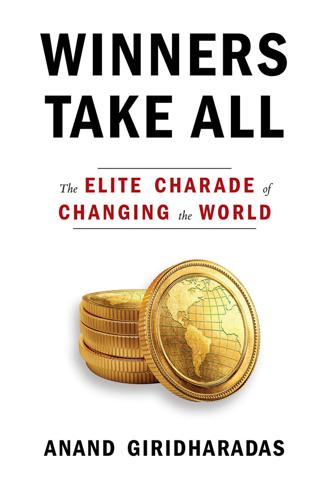
Winners Take All: The Elite Charade of Changing the World
by
Anand Giridharadas
Published 27 Aug 2018
“And that’s what I did, and now I’m in debt. And now I’m suffocating.” Jacobs’s story exposed multiple malfunctions in the machinery of American progress. It implicated the country’s health care system and the problem of unaffordable drugs; its public transport system; its wage and labor laws; its food system and food deserts; its student debt crisis; its so-called great risk shift, through which corporate America has stabilized its own income statements over a generation by off-loading uncertainty onto workers; and the ways in which shareholders were running companies more and more for themselves, to the detriment of every other stakeholder.
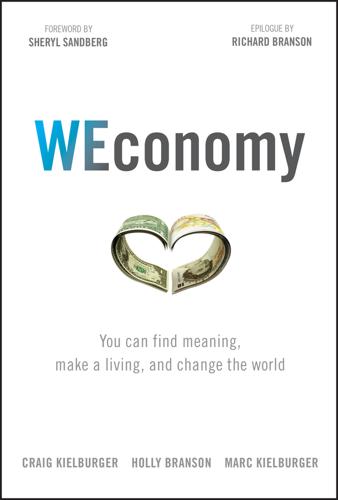
WEconomy: You Can Find Meaning, Make a Living, and Change the World
by
Craig Kielburger
,
Holly Branson
,
Marc Kielburger
,
Sir Richard Branson
and
Sheryl Sandberg
Published 7 Mar 2018
Selling to disadvantaged communities can often be a means of social and economic empowerment. Poor communities can be uplifted by the sale of productive or healthy options that are otherwise unavailable. In inner-city America, it was family-friendly entertainment. In other regions across North America, there are food deserts with scant fresh fruits and vegetables due to a lack of grocery stores or farmers' markets, contributing to an obesity epidemic and other health concerns. Done right, an entry into these markets brings increased choice, opportunity, competition, and a chance to increase quality of life in those communities.

Ghost Road: Beyond the Driverless Car
by
Anthony M. Townsend
Published 15 Jun 2020
But then they began to iterate on the form, fitting these driverless structures out as government and community facilities where people might go for their everyday needs. In one, they put a health clinic to reach those who can’t get to a doctor; in another, a farm stand to bring healthy produce to inner-city food deserts. These clever mash-ups raised a much bigger question. Why go to a government building when the building can come to you? The IKEA crew members were onto something. But they got a bit carried away with the technology. Like autonomists are wont to do, they wrote human beings out of the picture completely.

A New History of the Future in 100 Objects: A Fiction
by
Adrian Hon
Published 5 Oct 2020
UCS changed that world completely by giving producers a direct route to their customers’ front door, at a lower cost than ever. People came up with all sorts of novel applications. In New York, grassroots fast-food restaurants dispatched fresh dinners across the city every evening (eliminating food deserts in the process). In London, you could hire a UCS courier for free to take away unused perishables and unwanted clothes and send them to charities. In Helsinki, residents regularly borrowed appliances, power tools, kitchen utensils, suitcases, and gardening equipment from one another via UCS rather than buying them and letting them sit unused for months or years.
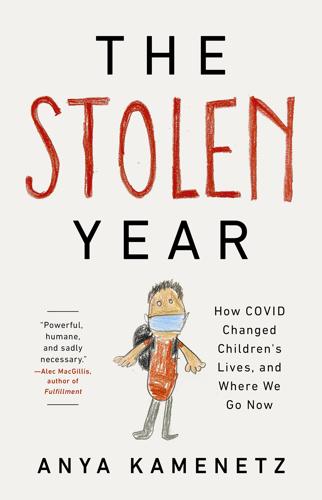
The Stolen Year
by
Anya Kamenetz
Published 23 Aug 2022
And they were more likely to have conditions that made a COVID infection more dangerous, like diabetes or heart disease. These conditions can be attributed to the toll of racism, not genetics. They come from unequal exposure to what UK epidemiologist Michael Marmot calls the “social determinants of health,” ranging from unsafe housing, to food deserts, to exposure to violence, stress, and trauma. This in turn meant proportionately more Black and Brown children were bereaved by the pandemic. REMEMBERING PAPI In San Antonio, Texas, eleven-year-old Christian and fourteen-year-old Gisele Alfaro shared a bedroom with their papi, their mother’s father.

Magic Pill: The Extraordinary Benefits and Disturbing Risks of the New Weight-Loss Drugs
by
Johann Hari
Published 7 May 2024
When you go on a diet, you try, as an individual, to lose weight—but, as Giles Yeo put it, “You’re trying to change your diet in the food environment we’re already living in.” You can’t isolate yourself from it. We all live in an environment where shitty food is cheap, constantly promoted to us, and pushed in our faces, while healthy food is expensive, unpromoted, and harder to get. In fact, many people live in “food deserts,” places where it is impossible to buy fresh food at affordable prices. Michael Lowe calls this kind of environment “obesogenic”—we live in a society that makes it easy to become obese, and hard to go back. In fact, he told me, “we have an environment that is about as obesogenic as man could design.”
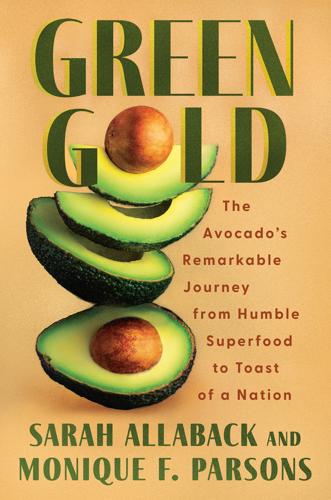
Green Gold
by
Sarah Allaback
Published 14 Mar 2025
It was guac.3 In 2024 on the religious holiday of Epiphany, known in Spanish as El Día de Los Reyes Magos, some avocado-marketing associations honored the occasion on Instagram with cartoon Hass avocados playing the role of the biblical three kings, wearing tiny crowns and carrying gifts to the infant Jesus. Later that year, El Rio Grande Latin Market, a Dallas-based grocery store chain, staged a Cinco de Mayo avocado extravaganza for customers at its newest location, a neighborhood previously designated a food desert. Working with Mexican Hass avocado importers from Fresh Del Monte and Stonehill Produce, store produce director Lou Rotell orchestrated the delivery of 301,000 avocados weighing 86,764 pounds to set the Guinness World Record for the largest avocado display in history, breaking a record set in 2019 by a Louisiana market.
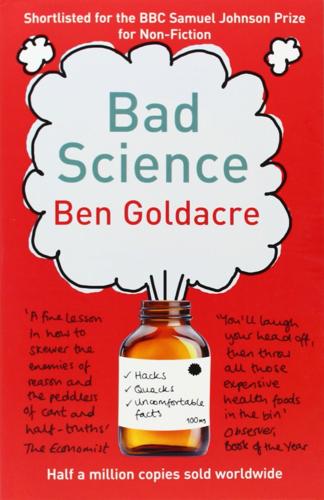
Bad Science
by
Ben Goldacre
Published 1 Jan 2008
Back in the real world, genuine public health interventions to address the social and lifestyle causes of disease are far less lucrative, and far less of a spectacle, than anything a Gillian McKeith—or, more importantly, a television commissioning editor—would ever dream of dipping into. What prime-time TV series looks at food deserts created by giant supermarket chains, the very companies with which these stellar media nutritionists so often have their lucrative commercial contracts? Who puts the issue of social inequality driving health inequality onto our screens? Where’s the human interest in prohibiting the promotion of bad foods, facilitating access to healthier foods by means of taxation, or maintaining a clear labelling system?
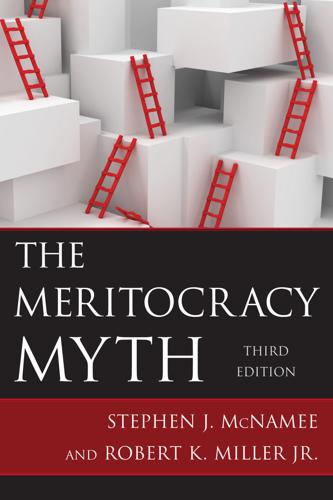
The Meritocracy Myth
by
Stephen J. McNamee
Published 17 Jul 2013
EEOC. http://www.eeoc.gov/eeoc/statistics/enforcement/charges.cfm (accessed November 6, 2012). Varacalli, Joseph A. 2006. The Catholic Experience in America. The American Religious Experience. Westwood, CT: Greenwood Press. Walker, Renee E., Christopher R. Keane, and Jessica G. Burke. 2010. “Disparities and Access to Healthy Food in the United States: A Review of Food Deserts Literature.” Health and Place 16:876–84. Weber, Lynn. 2001. Understanding Race, Class, Gender and Sexuality: A Conceptual Framework. Boston: McGraw-Hill. Western, Bruce. 2006. Punishment and Inequality in America. New York: Russell Sage Foundation. Wilson, William Julius. 1987. The Truly Disadvantaged: The Inner City, the Underclass, and Public Policy.

We Are All Fast-Food Workers Now: The Global Uprising Against Poverty Wages
by
Annelise Orleck
Published 27 Feb 2018
Now between $16 million and $32 million annually are granted to schools and farmers’ markets to enable low-income Americans to enjoy fresh local produce at affordable prices.15 GrowNYC has a similar initiative, providing freshly grown local produce free or affordably through greenmarkets, youth markets, community gardens, and fresh-food box drop-offs. These programs benefit underserved communities that were food deserts not long ago. The projects employ two thousand local residents, and support small farmers around the city.16 On a larger scale, Food Policy Councils and the Roots of Change foundation are crafting and sponsoring legislation to build healthy food policy across the country. In California, the world’s sixth-largest economy, proposed legislation that stands a good chance of passage includes laws improving access to clean drinking water for all, farm-to-school free meal programs, incentives for organic farming, and eased access to land and cutting-edge farm machinery for underserved farmers: young farmers, women, veterans, and farmers of color.

Bread, Wine, Chocolate: The Slow Loss of Foods We Love
by
Simran Sethi
Published 10 Nov 2015
Now those cockroaches of the sea are a mark of sophistication.45 Bourdieu argued taste isn’t a pure construct but a strategic tool born out of a system where our likes and dislikes become a way to distinguish ourselves from others (I start my day with a Diet Coke versus I start my day with green tea) and connect us to our lineage (think of halal or kosher dietary laws). In its best manifestation, these distinctions can be a source of pride; in its worst, a form of judgment. It’s not enough for something like lobster or kale to exist. We need to have access to it. This is one of the biggest criticisms of so-called food deserts: areas that experience a dearth of fresh, nutritious foods. We need to be able to afford them, but, more importantly, we need to feel like they belong to us—that they have a rightful place in our communities and on our plates. In my youth, kale did not belong to me. Now it does. To be clear, I don’t really like kale, but I eat it for its virtuosity.
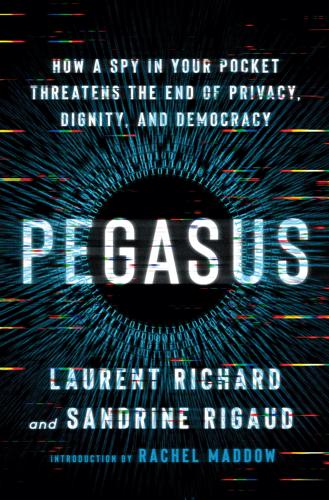
Pegasus: How a Spy in Your Pocket Threatens the End of Privacy, Dignity, and Democracy
by
Laurent Richard
and
Sandrine Rigaud
Published 17 Jan 2023
This investigation, if we decided to undertake it, would have to contend with swords and shields wielded by a dozen or more very defensive state actors and by a billion-dollar private technology corporation operating under the protection of its own very powerful national government. The taxi ride was the last leg of a trip that seemed to portend a rise of obstacles. The limitations put in place during the latest wave of Covid-19 had laid waste to familiar routines. The simple two-hour trip from Paris to Berlin had taken triple that, and included a connection through the food desert of an airport in Frankfurt, and the indignity of German soldiers shoving cotton swabs up our nasal cavities before we were allowed to exit the airport in Berlin. By the time Sandrine and I stumbled into our sleekly modern and well-lighted little rented flat above Danziger Strasse, we were both so knackered that dark-of-the-night questions were already preying on us.
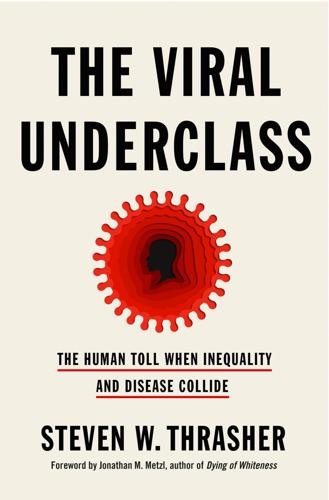
The Viral Underclass: The Human Toll When Inequality and Disease Collide
by
Steven W. Thrasher
Published 1 Aug 2022
Indeed, throughout their history in the Americas, Black people have had limited to no control over their bodies. Black bodies have repeatedly been made more vulnerable to viruses by way of slavery, squalid housing, evictions, dangerous working conditions, incarceration, substandard education, manufactured illiteracy, food deserts, and outright medical fraud. Fittingly, much of this dynamic is encapsulated in the history of the word mandingo, which has come to mean a fetishized sense that white people project onto Black bodies, mixed with a fear of how the boundaries between white and Black bodies might break down biologically and financially.
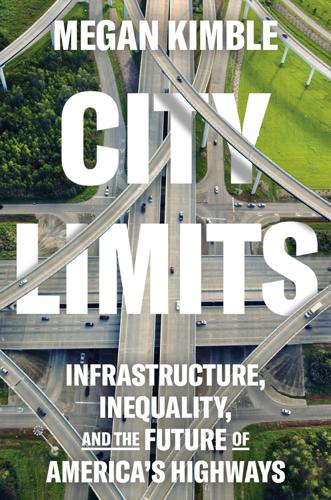
City Limits: Infrastructure, Inequality, and the Future of America's Highways
by
Megan Kimble
Published 2 Apr 2024
It’s not a smooth transition at all,” Jasmine says. After months of searching, in October 2021, Jasmine moved to the Summit at Bennington, an apartment complex in northeast Houston. Her new apartment was nice. It had central air and heat, a dishwasher, clean carpets. But she hated the neighborhood. “It’s a very industrial food desert. There’s nothing within walking distance, absolutely nothing, not even a corner store,” she told me. Her kids still went to school in the Fifth Ward, but now it was too far for them to walk or bike. So she drove twenty minutes to drop them off and pick them up every day. After she moved, she got a new job as a medical scribe.
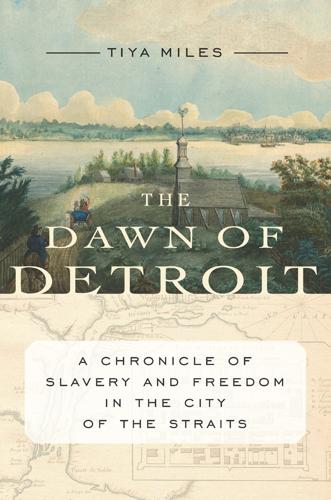
Dawn of Detroit
by
Tiya Miles
Published 13 Sep 2017
Our Department of Afroamerican and African Studies was centrally involved in this activity along with faculty in Social Work, Sociology, Urban Planning, and the Residential College, so I sat in on these discussions with urban planners, sociologists of the city, and twentieth-century urban historians, which heightened and sharpened my interest in Detroit. Although my peers were discussing postindustrial society, food deserts, green spaces, mass incarceration, and the pitfalls of gentrification, I could see links between this modern (and postmodern) Detroit and the Detroit of the colonial and early American eras when slavery was practiced. I began to visit Detroit museums and historic sites in southeastern Michigan to try to feel the outlines of a story I might tell even as my imagination was captured by a quotation by a colleague involved in the Detroit School discussions, the historian Charles Bright, who had written the following about Detroit history in an article in the Journal of American History: The dominant historical discourse [on Detroit] is one of rise and fall, spiked by an immense nostalgia for the city that once (briefly) was.
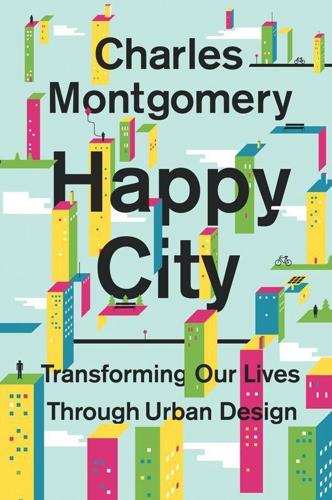
Happy City: Transforming Our Lives Through Urban Design
by
Charles Montgomery
Published 12 Nov 2013
Active Living Research, May 2012, www.activelivingresearch.org/files/Synthesis_Disparities_Factsheet_May2012.pdf (accessed October 12, 2012). less access to jobs: “Where We Need to Go: A Civil Rights Roadmap for Transportation Equity,” Leadership Conference Education Fund, 2011. less access to food: Economic Research Service, Access to Affordable and Nutritious Food: Measuring and Understanding Food Deserts and Their Consequences: Report to Congress (Washington, DC: U.S. Department of Agriculture, 2009). worse access to supermarkets: Leone, A. F., et al., “The Availability and Affordability of Healthy Food Items in Leon County, Florida,” www.med.upenn.edu/nems/docs/Leone_et_al_Abstract.doc (accessed March 3, 2012).

Smart Cities: Big Data, Civic Hackers, and the Quest for a New Utopia
by
Anthony M. Townsend
Published 29 Sep 2013
GOODBUILDINGS mashed up city records with related information from across the web, like walkability scores, to guide people seeking commercial space in sustainable buildings. Another app, Market Guardians, used game mechanics—awarding virtual points and badges to the most active participants—to entice young people to map urban “food deserts” by tracking the availability of healthy food at stores in inner-city neighborhoods. In October, the winning teams presented their projects at a mayoral candidates’ forum just three weeks before the election. Nath hammered the message home, telling his colleagues in government, “the community isn’t just a way to define, but also a way to solve problems.”6 In 2012, with Hirshberg’s protégé Jake Levitas now at the helm of its civic hacking efforts, the Gray Area Foundation began to refine and export its model for civic engagement around smart technology, launching what it now called “Urban Prototyping” events in San Francisco and Singapore.
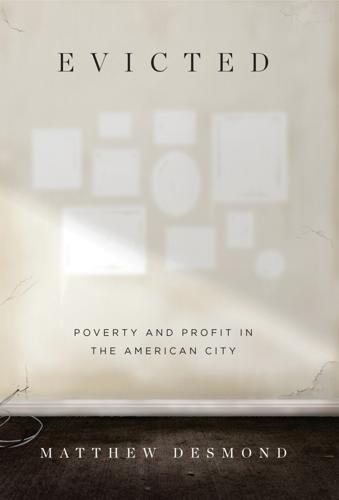
Evicted: Poverty and Profit in the American City
by
Matthew Desmond
Published 1 Mar 2016
“Exploitation” does not appear at all in the pages of many other modern classics that take up the plight of the poor, from Kathryn Edin and Laura Lein’s Making Ends Meet: How Single Mothers Survive Welfare and Low-Wage Work (New York: Russell Sage Foundation, 1997) to Charles Murray’s Coming Apart: The State of White America, 1960–2010 (New York: Random House, 2012). 43. On food prices in poor neighborhoods, see Chanjin Chung and Samuel Myers, “Do the Poor Pay More for Food? An Analysis of Grocery Store Availability and Food Price Disparities,” Journal of Consumer Affairs 33 (1999): 276–96; Marianne Bitler and Steven Haider, “An Economic View of Food Deserts in the United States,” Journal of Policy Analysis and Management 30 (2011): 153–76. 44. Lizabeth Cohen, A Consumers’ Republic: The Politics of Mass Consumption in Postwar America (New York: Knopf, 2008), 40; Elizabeth Blackmar, Manhattan for Rent, 1785–1850 (Ithaca: Cornell University Press, 1989), 237–38; Jacob Riis, How the Other Half Lives: Studies Among the Tenements of New York (New York: Penguin Books, 1997 [1890]), 30; Allan Spear, Black Chicago: The Making of a Negro Ghetto, 1890–1920 (Chicago: University of Chicago Press, 1967); Matthew Desmond, “Eviction and the Reproduction of Urban Poverty,” American Journal of Sociology 118 (2012): 88–133.

Braiding Sweetgrass
by
Robin Wall Kimmerer
A friend of mine says she buys just one green item a week— that’s all she can do, so she does it. “I want to vote with my dollar,” she says. I can make choices because I have the disposable income to choose “green” over less-expensive goods, and I hope that will drive the market in the right direction. In the food deserts of the South Side there is no such choice, and the dishonor in that inequity runs far deeper than the food supply. I am stopped in my tracks in the produce section. There on a Styrofoam tray, sheathed in plastic and tagged at the princely sum of $15.50 per pound, are Wild Leeks. The plastic presses down on them: they look trapped and suffocated.
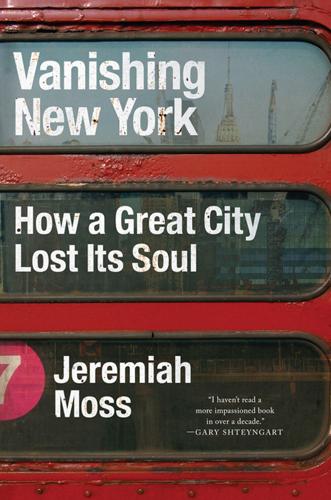
Vanishing New York
by
Jeremiah Moss
Published 19 May 2017
In the Pathmark’s final hour, I peered inside the windows. The shelves were bare, the checkout conveyor belts empty, no customers stood in line. The cashiers put their arms around each other and wept as they said goodbye. Two hundred employees would now be out of work. A low-income neighborhood would become evermore of a food desert. Another luxury tower would rise. And none of this was the result of “market forces.” None of it was natural. One block east of the shuttered Pathway is the site of the future MEC. In 2009, the Bloomberg administration blighted this entire block of small businesses, using eminent domain to claim it for a $700 million development project, the 1.7-million-square-foot East Harlem Media, Entertainment and Cultural Center.
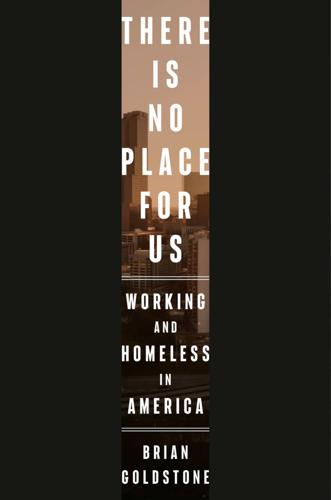
There Is No Place for Us: Working and Homeless in America
by
Brian Goldstone
Published 25 Mar 2025
But they soon began to see why the area was attracting so many people from around the country: the relative quiet, the safety, the abundance of parks and proximity to the Chattahoochee River, the excellent public schools. For Natalia and Maurice, this suburban existence was increasingly, and unexpectedly, appealing. Even the bland big-box shopping centers started to grow on them; since they’d lived in an urban food desert, nothing seemed more solidly middle class than Chili’s and Barnes & Noble and Bed Bath & Beyond. By the time Maurice was hired on at Enterprise—before his interview, he had done research on the company, and the hiring manager was surprised to hear that Maurice knew things about Enterprise that even he didn’t—he and Natalia felt that they were exactly where they were supposed to be.

The omnivore's dilemma: a natural history of four meals
by
Michael Pollan
Published 15 Dec 2006
George's crops are basically inedible—they're commodities that must be processed or fed to livestock before they can feed people. Water, water, everywhere and not a drop to drink: Like most of Iowa, which now imports 80 percent of its food, George's farm (apart from his garden, his laying hens, and his fruit trees) is basically a food desert. The 129 people who depend on George Naylor for their sustenance are all strangers, living at the far end of a food chain so long, intricate, and obscure that neither producer nor consumer has any reason to know the first thing about the other. Ask one of those eaters where their steak THE FARM * 3 5 or soda comes from and she'll tell you "the supermarket."

The Unwinding: An Inner History of the New America
by
George Packer
Published 4 Mar 2014
She knew nothing about gardening, just eating, but she and her neighbors grew everything edible to man. The policy was come at will and pick what you want, just don’t tear up the garden. Only the groundhogs and deer didn’t abide by it. Tammy and MVOC did a second survey of Youngstown, this time of grocery stores. Their map showed that Youngstown was a food desert—there were hardly any decent stores in the whole city. From certain parts of the east side it took a four-hour round-trip on the bus to buy fresh groceries, and it made a big difference when a Bottom Dollar opened up on the south side. A good corner store might carry a few potatoes, a few onions, and heads of lettuce starting to turn black, but most were like the F&N Food Market next to Vickie’s demolished house on Shehy Street, selling fast food, liquor, and cigarettes.

There Is Nothing for You Here: Finding Opportunity in the Twenty-First Century
by
Fiona Hill
Published 4 Oct 2021
He noticed they were cracked and threw them away. Granny cried. They had nothing at all to eat that day. Mindful of that story, I was always careful when I collected Grandad’s eggs. Beyond what Grandad could grow and whatever Dad could spare from our garden, Granny and Grandad had no fresh produce. The village itself was a “food desert.” It had one small shop for basic goods. There was a fish and chip shop and a couple of other shops less than a mile away in the next village, Billy Row, and a whole town full of shops a bit farther away in Crook, where Granny had grown up. But Granny and Grandad couldn’t get there. The bus no longer came into Roddymoor and they couldn’t walk as far as the next bus stop.

Bourgeois Dignity: Why Economics Can't Explain the Modern World
by
Deirdre N. McCloskey
Published 15 Nov 2011
Remarks such as “there are still poor people” or “some people have more power than others,” though claiming the ethical high-ground for the speaker, are neither deep nor clever. Repeating them, or nodding wisely at their repetition, or buying Piketty’s Capital in the Twenty-First Century to display on your coffee table, does not make you a good person. You are a good person if you actually help the poor. Open a business. Invest in a grocery store in an urban food desert. Invent a new battery. Vote for better schools. Adopt a Pakistani orphan. Volunteer to feed people at Grace Church on Saturday mornings. The offering of counterproductive policies, or the making of indignant declarations to your husband after finishing an article in the Sunday New York Times Magazine, does not help the poor.